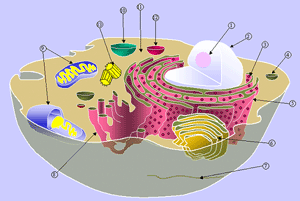Blood vessels transport chemical energy stored in molecules throughout the body. Nerves conduct electrical energy. But what conducts the electromagnetic energies we have been discussing? Well, electrical and magnetic fields don’t actually need pathways to propagate. They are transmitted through space itself. Unfortunately the fields diminish the farther away we get from their source and in some cases these fields can be shielded. [1] Over a very small region the fields will be strong enough to conduct energy or information, but over larger areas a different mechanism is required.
Electrical fields follow the flow of electricity. As we have seen, the nerves are not the only conductors of electricity in the body. An ECG measures the electrical activity of the heart in places far away from our chest. These signals are possible because the blood system itself conducts electrical information. So the circulatory system is one possible channel for electromagnetic energy, not just chemical energy. Interestingly, the Daoists long ago identified the blood system as a conduit of Chi. If Chi is not simply chemical energy perhaps they were sensing this conductance of electromagnetic energy through our blood vessels. Or, perhaps, the definition of Chi needs to be broadened to include all these forms of energy: chemical, electrical, and electromagnetic.
Does it stop there? Does our circulatory system feed every part of the body? What about inside the cells? How can information be transmitted to the insides of the cells themselves? To answer this question we need to look at the current and the evolving models of the cell.

The Bag of Soup Model
In most books that describe the anatomy of a cell, you will find a diagram similar to the one shown here. This is a very detailed view of the components we find inside the cell body. Detailed, but incomplete. What is that water-like substance inside the cell? Soup! In the popular model of the cell all the internal apparatus float in this soup. Chemicals, from outside the cell, ease their way past the permeable cell membrane, and then drift around in the soup until they happen to bump into something important. The chemical energy model of communication requires a random movement of these chemicals until they find and latch onto their destination.
This is not a very satisfying model, relying as it does on random timing for information transfers to occur. James Oschman notes that many cellular activities happen much faster than a random walkabout would allow. Something is missing in this model. [2]
When we look in most anatomy books and see the way the body is depicted, we find a similar “something missing.” The pictures will show in wonderful detail the circulatory system, or we may trace the skeletal system or the muscular or nervous systems. But all these models omit the material that these systems are embedded within. What is missing is the connective tissue. Connective tissues join the circulatory system to the nervous system to the muscular system and so on. Our connective tissues are ubiquitous and, as we have seen, are formed of collagen fibers, elastin fibers, and many other components arrayed in crystalline matrices.
These matrices form the piezoelectric crystals that create and conduct the electrical energies we were discussing in the previous section.
- — With metal plates, for example. See the section on Electropollution for a discussion on this topic.
- — See Oschman’s book Energy Medicine, chapter fourteen, for more details on this topic.
(Next: The Integrins and Cytoskeleton )
